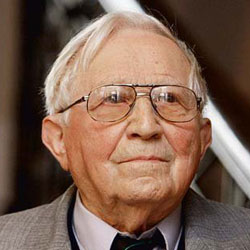Fallen
angels
look like
flakes of soot
abacuses
cabbage leaves
stuffed with black rice
hail
painted red
blue flames
with yellow tongues
fallen angels
look like
ants
moons wedged beneath
the green fingernails of the dead
angels in heaven
look like the inner thighs
of an underage girl
like stars
they shine in shameful places
they are pure like triangles and circles
with silence
inside them
fallen angels
are like the open windows of a morgue
like cows’ eyes
like the skeletons of birds
like falling planes
like flies on the lungs of fallen soldiers
like streaks of autumn rain
connecting lips with birds taking flight
over a woman’s palm
wander
a million angels
devoid of belly buttons
they type on sewing machines
long poems in the shape
of a white sail
their bodies can be grafted
onto the trunk of an olive tree
they sleep on ceilings
falling drop by drop
Notes on the Poem
What will we learn by looking again at Joanna Trzeciak's spare, elegant translation from the Polish of Homework Assignment on the Subject of Angels by Tadeusz Rozewicz, from the 2012 Griffin Poetry Prize shortlisted collection Sobbing Superpowers: Selected Poems of Tadeusz Rozewicz? The judges' citation for this collection notes how Rozewicz's work, deftly and deferentially translated from the Polish by Joanna Trzeciak, takes on grand themes but uses plain speech to examine them. "Homework Assignment on the Subject of Angels" is a striking example of this approach, as Rozewicz takes on and Trzeciak interprets in English the multiplicity of meanings of the sacred symbol of angels. Rozewic deconstructs the symbol of the angel - an idealized being and a messenger from God with an equivalent in many religious and spiritual traditions - by associating it and its "fallen" counterpart with numbers of simple and vivid images. While simple, though, some of the images are difficult to align, even nonsensical. If the angel and the fallen angel are delineated as the embodiments respectively of good and evil, or the failure of goodness, why aren't the images associated with each also obviously denoting or connoting good or evil? For example, why is a fallen angel like an abacus? what are the negative connotations, if any, with being compared to "streaks of autumn rain" or "birds taking flight?" While equating an angel with the purity of a young girl might make sense, equating an angel with the anatomy of a girl described with a more pointed adjective is troubling. In keeping it simple to the point of terse, Rosewicz the poet and Trzeciak the translator powerfully call into question, even subvert the symbols. While contemplating something truly immense, they still modestly categorize the exercise as a "homework assignment." The symbols are viewed freshly and anew. With clear language and images, it's revelatory to discover the surprisingly blurred lines between good and evil.
